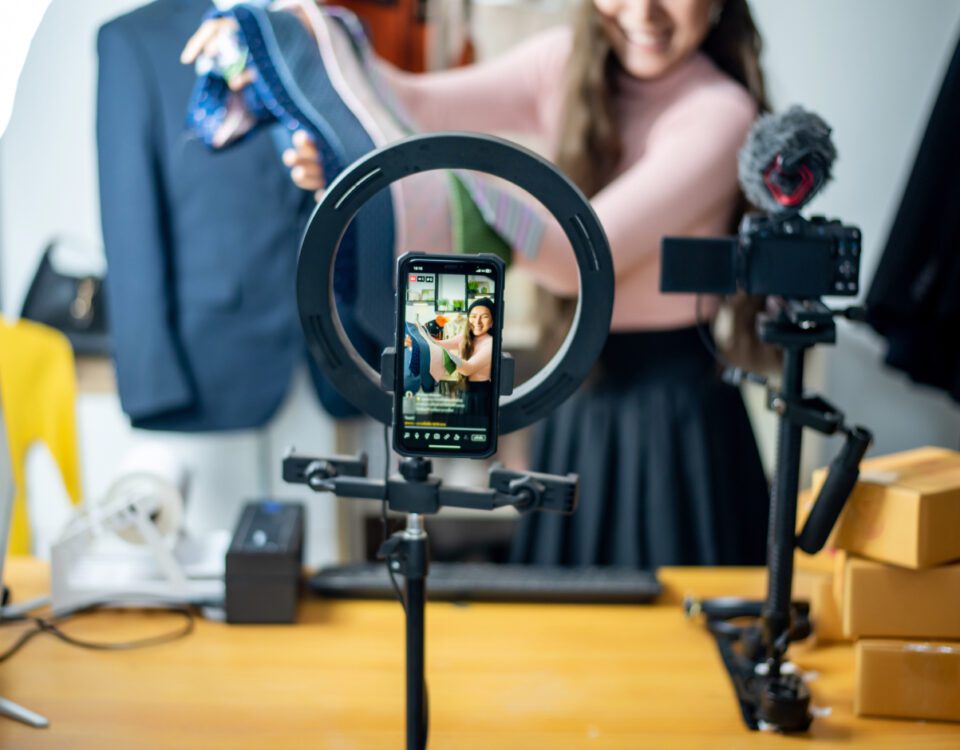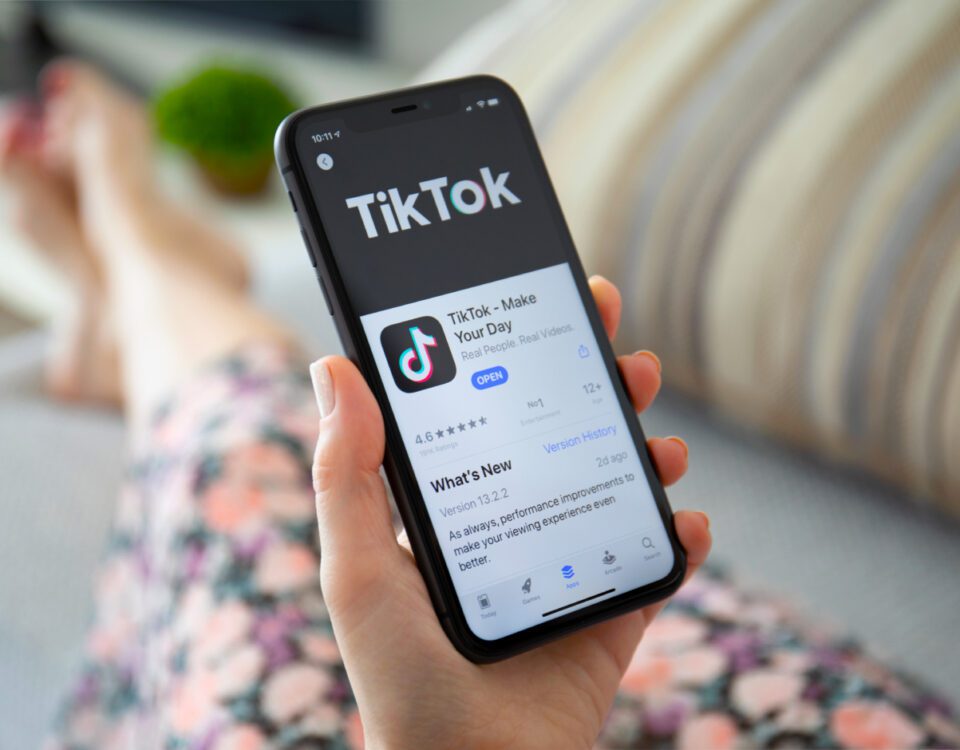
7 Social Media Marketing Challenges & How to Overcome Them
Thursday 18th April
 by Beth Perrin
by Beth Perrin
Share
As a social media marketer, you’ll no doubt understand that creating great content, delivering impactful ad campaigns and engaging your community is no walk in the park - and achieving your desired results can be challenging at times. While some issues are straightforward, such as ensuring there are no typos in your posts or checking that an image has been sized correctly, others can be much more detrimental to your overall social success, potentially even harming your brand reputation. Today we’re taking a look at 7 of the most common social media marketing hurdles and explaining how to tackle each one, so that you can get your strategy back on track and start seeing the ROI you want to see from your social presence.
1. Thinking of Fresh Content Ideas
As a brand, it’s important to publish content on social media regularly so that your audience can keep up to date with your latest products, services and company news - and so that people don’t think you’ve gone inactive. However, thinking of fresh ideas can sometimes be tricky. Here are some ways to get inspired:
• Browse hashtags
One of the easiest ways to gain content inspiration is to compile a list of hashtags that relate to your brand and industry, and check them frequently to see what others are posting.
• Look at your competitors’ content
It goes without saying that you should never plagiarise other creators’ work, but taking a look at your competitors’ social media pages to find ideas for your content can be beneficial from time to time.
• Use templates
Instagram allows you to create a Reel from a template, meaning you can replicate a Reel that you like in just a few simple taps. Templated Reels use the same music and timing as the original Reel - you just have to replace the photos or video clips with your own. TikTok also has its own built-in templates for easy use - simply open the app and tap the + icon, which will take you to the video recording screen. Then tap on Templates, browse through the list of TikToks and pick the one you’d like to use. Next, import media from your camera library and add stickers and effects if desired.
• Instagram Inspiration Hub
Instagram offers an inspiration hub which is full of ideas for Reels, image posts and ads. To access it, tap on the professional dashboard button on your profile just below your bio (only available in the mobile app), then scroll down to the ‘Tips and resources’ section, where you’ll see an option labelled ‘Inspiration’. Tap on this to view plenty of great content suggestions from businesses, creators and other professionals.
• National days & awareness events
Use an awareness days calendar like AwarenessDays.com to keep an eye out for any upcoming national or global events that may apply to your brand, and work them into your content if they feel like a natural fit.
2. Customer Service & Community Management
Responding to all incoming messages and comments in a timely manner is a challenge for many brands - especially large ones that receive a high volume around the clock. 79% of customers expect a response to their social media comments within 24 hours, with 39% of them shortening this expectation even further to just 60 minutes, so failing to reply quickly can lead to customer churn. To combat this, you’ll need to either recruit a dedicated team of customer service reps and community managers who are responsible for all of your social media communications, or outsource this process to an external agency like 3sixfive who can handle your social inboxes on your behalf.
This is especially crucial in the event that a social media crisis should occur, such as a viral customer complaint, a negative allegation about your store or location, a food poisoning outbreak in your restaurant, or a backlash to a piece of content you’ve shared. Having a team on hand who can identify the beginnings of a crisis and respond promptly before it spirals out of control will protect your brand reputation and prevent damage to your online image. After all, 89% of customers say a brand can regain their trust if it admits to an error and is transparent about the steps it will take to fix it.
3. Setting & Monitoring KPIs
It’s important to set KPIs (key performance indicators) and other goals, and monitor them regularly so you know how well your content and ads are performing. Sometimes it can be challenging to know which metrics matter the most and therefore which ones to keep an eye on. They can either be tracked manually using the built-in analytics tools on each social media platform or via the reporting feature on a third-party CRM, and can be separated into the following categories:
• Content metrics
• Engagement rate
• Reach
• Impressions
• CTR (click through rate)
• Video views & completion rate
• Audience metrics
• Net followers gained
• Audience growth rate
• Customer service metrics
• FCR (first contact resolution)
• AHT (average handle time)
• FRT (first response time)
• Customer feedback metrics
• CSAT (customer satisfaction)
• Sentiment
• NPS (net promoter score)
The metrics you choose to monitor will depend on the specific goals of your business, so to avoid tracking the wrong ones, you should discuss with your team what you want to achieve from your social media presence and therefore which ones are most valuable. Brands using social media primarily for customer support, for example, will want to focus on retaining a low AHT, while those using it for paid advertising will want to focus on their CTR and web traffic, and those using it for brand awareness will want to focus on their reach, impressions and audience growth rate.
You can learn more about social media metrics in our ultimate guide here!
4. Avoiding a Stagnant or Declining Engagement Rate
Social media engagement is important because it means your audience is connecting with your content, plus it helps develop customer relationships. If your engagement rate is stagnant or declining, it suggests that your campaigns aren’t making the impact they should, and that your audience isn’t interacting with your posts. Expressed as a percentage, your engagement rate is calculated by dividing the total number of interactions your content receives by the total number of impressions, then multiplying by 100.
To overcome this, aim to create engagement-based content that encourages people to interact in some way, such as:
• Competitions or giveaways
• UGC (user generated content) requests
• Polls and questions
• Videos and Reels
• Links to your blog or website
5. Sharing High-Quality Images & Videos
Social media is a highly visual space, so businesses that don’t have high-quality photos and videos of their products or location are going to struggle to stand out. In fact, 60% of online shoppers say that a good-quality photo is the most important factor in online sales, with 30% also agreeing that they will not make a purchase if a brand doesn’t supply any images, or if the ones available are low in quality.
If your brand is lacking in the imagery department, arrange a photoshoot with a professional photographer and/or videographer who can capture your products or location in their best light - or have a go at taking some yourself, if you have access to a high-quality camera. If you’re also going to create graphics to post on social media, make sure they follow your brand guidelines and include the right fonts and colours to make your brand instantly recognisable, and remember to export them at a high resolution so they don’t look blurry when shared online.
6. Keeping Up With Trends
Digital trends come and go rapidly, so it can be challenging to keep up with what’s popular right now. Joining a trend late, or missing one that applies nicely to your brand, can lead to missed opportunities for engagement and increased awareness, which is why it’s essential to monitor for topics and content formats that audiences are currently enjoying, as well as trends that are specific to your industry. This can be achieved by:
• Reading blogs, articles & newsletters
A survey conducted by Hubspot found that one of the top 3 reasons for reading blogs is to learn about job and industry related trends, so it’s a good idea to find some blogs and websites that are relevant to your brand, and check them routinely to monitor for news and insights. You can also sign up for newsletters that share daily or weekly information about social media trends.
• Monitoring for new social media features
Social media platforms are constantly evolving and introducing new features that make it easier for brands to connect with their followers and create fresh content, so as a marketer or social media manager, it’s beneficial to keep up with what’s being released. We publish monthly updates here on our blog, so you can check these out to see an overview of the latest social media tools - or visit Social Media Today’s website for daily social news.
• Trending audio
On Instagram, trending audio is indicated by a little upwards pointing arrow beside its name in the bottom left corner of a Reel. When you visit the audio library during the Reel creation process, Instagram displays the number of Reels that have been made using each track, so you can monitor for trends here too. Trending audio can also be found on TikTok. Visit the trending songs section of the Creative Centre to browse the most popular clips from the last 7 days. You can even view detailed analytics for each one and filter out those that aren’t approved for business use.
• Scrolling through your desired platforms
Yep - we know it’s a stereotype that social media managers spend their days simply scrolling through Instagram! But regularly setting aside some time to have a look at what others are sharing (whether that’s accounts you follow or content on your explore/For You page) is a great way to discover what’s trending at the moment.
7. Receiving Inaccurate Data from AI
AI is an inescapable force in the world of social media at the moment, but here at 3sixfive, we’re all about the human approach - and we believe it’s best to use real people for the majority of marketing tasks instead of handing them over to a bot. When it comes to sentiment analysis in particular, AI-based systems often generate unreliable results due to their inability to understand real human language, with positive messages accidentally being labelled negative and vice-versa. It’s common for bots to struggle with:
• Sarcasm, irony and exaggeration
• Slang terms and informal language
• Regional dialects and accent phonetics
• Spelling and grammatical errors
• Industry-specific terms
• Emojis and other symbols
To combat this, it’s best to carry out manual sentiment analysis instead of leaving it in the hands of AI. Don’t have the time or resources? No problem - our Human Insight service is here to help. It’s the only human-led sentiment tracking system available on the market and can help you gather the data you need to make key operational changes that will improve your brand reputation and customer satisfaction.
Summary
Social media success doesn’t happen overnight and multiple strategy revisions are often needed in order to achieve your desired results - however, we hope the solutions we’ve shared today will help you overcome a range of common challenges and start delivering stronger content and customer service. Which part of digital marketing do you find most difficult? Which tips have you implemented to make things easier for you and your team? Find us on X @3sixfivepro to share your experience and let us know if you need any additional assistance.








